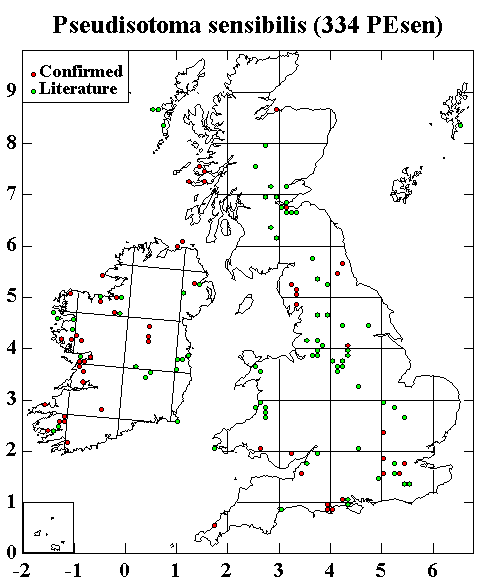|
Pseudisotoma sensibilis is one of the most common and widespread springtails in Britain and Ireland. It is found in a variety of habitats including under tree bark. The body is dark blue in colour, a PAO is present and the eyes each have eight ocelli. The largest specimen I have seen was 1.8 mm in length. The mucro has three teeth (Fig. 1). The tibiotarsus of leg 1 has two clavate tenant setae (Fig. 2) whereas there are three such setae in the same position on legs 2 and 3 (Fig. 3). In addition, the posterior dorsal abdomen usually possesses long serrated setae (Fig. 4).
Pseudisotoma sensibilis is superficially similar to species of Vertagopus which also have clavate tenant setae on the tibiotarsi. However, Vertagopus have an additional small tooth on the ventral side of the mucro.
There are a few records in the literature for Pseudisotoma 'monochaeta' which has only one clavate tenant seta on each tibiotarsus. However, these setae are easily lost. All of the specimens labelled 'Pseudisotoma monochaeta' that I have examined in the NHML collection (including all of Bagnall's specimens) have at least one leg with more than one clavate tenant seta on the tibiotarsus. In the light of these comments, it seems unlikely that Pseudisotoma monochaeta been reliably recorded from Britain or Ireland. Thus it should probably be removed from the checklist.
Back to main page
|
|









